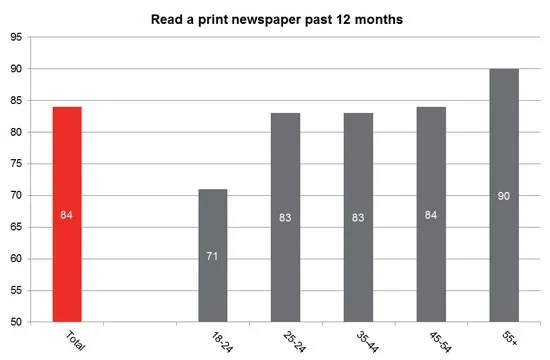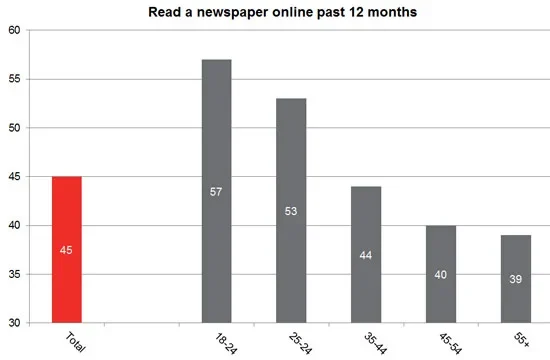YouGov CEO, Stephan Shakespeare, discusses how newspapers can compete in a changing media landscape
It doesn’t hurt to state the obvious: readership of many newspapers is declining, and more and more people are switching to online media to stay in touch with the news. Advertising rates are lower for online readers, and newspapers have a tougher time maintaining market share in that space with so much competition from a huge variety of players. So what to do?
Next week I’ll speak at the Guardian’s Changing Media Summit about how to optimise a business for this. I’ll be revealing what I regard as our own version of the Higgs Boson – the trace of a particle that shows there truly is a god of marketeers.
We’ve found a way to measure the effect of advertising that has not been consciously remembered, in a structured way that can improve the value of advertising space. Included in our research is an examination of trends that provide both warnings and encouragement to the traditional media of newspapers.
84% of the population have still read one in the past year. In London this figure rises to 93% where more papers such as City A.M. allow commuters to get their daily news fix for free. The concern is the age profile – as the charts show, younger people are less likely to pick up a newspaper but more likely to read news online than older readers. So the trend is structured to accelerate.


But the numbers also show there is still a window of opportunity: most people, even 71% of 18-24 year olds, do have some familiarity with newspapers.
The job is to build the brand across into the web while the window is still open. How then to optimise that window will be revealed when I unveil the full evidence of the Higgs Boson, right here in this space in two weeks.
This article originally appeared in City AM
See more information about the Guardian's Changing Media Summit here









